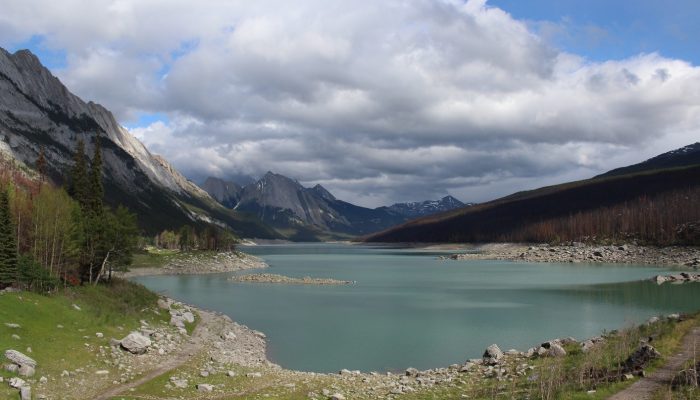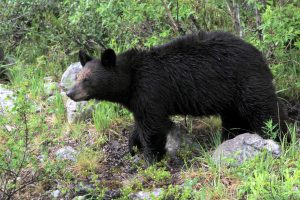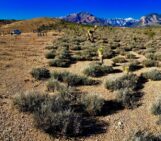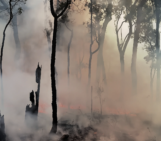
Jasper National Park is the largest national park in the Canadian Rocky Mountains, spanning across nearly 11,000 square kilometres of Canadian wilderness. The park is known for its rugged landscape, extensive trails, and abundance of deer, bighorn sheep, wolves, mountain lions and bears. This region is also very susceptible to blazing wildfires, a result of human activity that began more than a century ago.

This black bear came down from the forest on the left side, a few minutes after Ziesch took the photo of the lake. Credit: Jennifer Ziesch
In 1909, just two years after the park was established, the first national park wardens were hired to extinguish wildfires. At the time, all man-made and natural fires were considered threats to the forest and its inhabitants.
However, ecologists now know that fires are in fact a natural part of Canada’s forest dynamics and play an important role in shaping the diversity and ecology of these regions.
By suppressing natural fires, the park wardens had a hand in limiting the diversity of plants and animals in these forests, making the landscape more prone to insect infestation and disease. This in turn increases the chance of sparking large threatening wildfires.
For example, Jasper National Park has for some time been plagued by mountain pine beetles, with foresters reporting a tenfold increase in beetle infection along the park’s perimeter. The insects bore into the wood and after two to three years, leave behind dry dead trees, the perfect kindling for big wildfires.
July 2015, one particularly chaotic wildfire, ignited by a lightning strike, consumed 1,000 hectares of the Maligne Valley area in central Jasper National Park. At one point, the wildfire was only 15 kilometres from the local town Jasper, but fortunately the wind redirected the fire’s path. If not for the fire’s change in direction, 50,000 people would have been forced evacuate their homes. After four days, cooler temperatures and six milimetres of rain gave wildfire management crews the opportunity to control and suppress the flames. Additionally, a small plateau that was unusually moist stopped the fire from burning up the slopes on the west side of Medicine Lake, dramatically reducing the fire’s overall size.
Jennifer Ziesch, a researcher at the Federal Institute for Geosciences and Natural Resources in Germany, took this featured photograph of Medicine Lake last year when road tripping with her husband through the US and Canadian Rocky Mountains.
“It was only after I glanced at the photo twice that I noticed its importance. On the right side, you can see the burnt forest, where the wildfire stopped” said Ziesch.
“The contrast between the charred black versus the vibrant green and the scorched red tells a powerful story about forest resilience and renewal. Even now, three years later on, you can still see the consequences of the wildfire, but the natural equilibrium is slowly returning.”
References
A look back at Jasper park’s Excelsior wildfire (The Fitzhugh)
Fire and vegetation management in the Mountain National Parks, Parks Canada
Increased wildfire risk in Jasper due to pine beetles, says MP (Global News)
Jasper National Park not prepared for potential forest fire ‘catastrophe,’ researchers say (CBC)
Imaggeo is the EGU’s online open access geosciences image repository. All geoscientists (and others) can submit their photographs and videos to this repository and, since it is open access, these images can be used for free by scientists for their presentations or publications, by educators and the general public, and some images can even be used freely for commercial purposes. Photographers also retain full rights of use, as Imaggeo images are licensed and distributed by the EGU under a Creative Commons licence. Submit your photos at http://imaggeo.egu.eu/upload/.





Trip To Banff And Jasper
Hello blogger, good morning. Gorgeous blog post. You have gained a new reader. Please keep it up and I look forward to more of your incredible articles. Regard